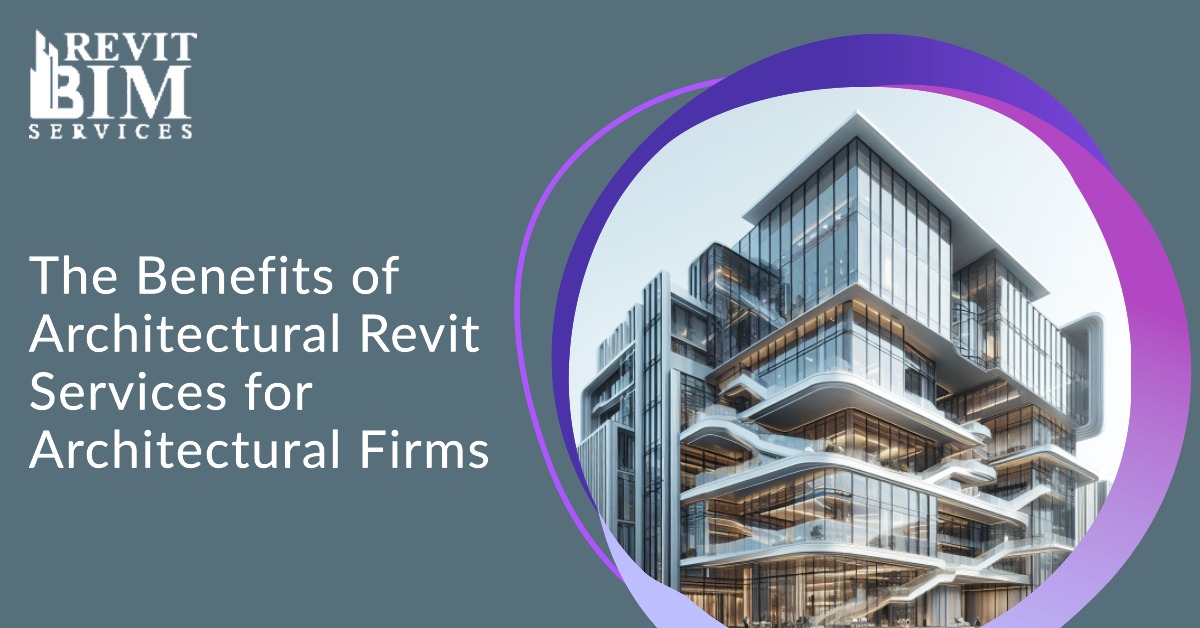
The Benefits of Architectural Revit Services for Architectural Firms
In the construction landscape, architectural design serves as the foundation, determining the identity of structures and shaping user experiences. However, the conventional tools architects traditionally employ often prove inadequate, presenting challenges such as imprecise outcomes, sluggish workflows, and communication barriers among project collaborators. Architects, navigating the intricacies of manual drafting and rigid software interfaces, face constraints that hinder their creative processes.
Building Information Modeling (BIM), with Architectural Revit Services emerging as a transformative solution for architectural design. This contemporary approach not only addresses the limitations of traditional tools but fundamentally alters the landscape of architectural design. BIM modeling, coupled with Revit, offers a unified platform for seamlessly integrating interior and exterior design elements.
Table of Contents
In this blog, we will discuss how architects and architectural firms can benefit from the multiple advantages offered by Architectural Revit Services. We will also discuss some common challenges and their solutions in the implementation of Revit in architectural workflows.
What is Revit and how it helps in Architecture design
Revit is a BIM software; its strength lies in its dynamic capabilities. It introduces architects to parametric design, an adaptable method of creating designs that respond to varying requirements. This feature empowers architects to explore creativity, whether shaping internal spaces or configuring the external appearance of a building. It excels in fostering collaboration. Traditional tools often confine different experts to isolated workflows, impeding effective communication among architects, structural engineers, and MEP professionals. Revit, in contrast, promotes interoperability, providing a shared space for seamless collaboration.
Key Features of Revit BIM for Architectural Modeling
- Parametric Design: Revit’s parametric design capabilities empower architects to create flexible and adaptive designs that respond dynamically to changes. The beauty of parametric modeling lies in its ability to link design elements, allowing for efficient modifications across the entire project. For instance, altering the dimensions of a room can automatically adjust associated elements, showcasing the interconnected nature of the BIM model.
- 3D Visualization: Revit takes architectural visualization to new heights by offering realistic 3D models. The importance of this feature cannot be overstated, as it significantly enhances client communication and understanding. Visualizing a design in three dimensions provides clients with a tangible sense of the final product, fostering better decision-making and alignment of expectations.
- Interoperability: Revit’s commitment to interoperability sets it apart, allowing architects to collaborate seamlessly with other design disciplines. The integration of structural and MEP elements within the BIM model ensures that all project stakeholders work on a unified platform. This interconnectedness promotes a holistic approach, reducing the likelihood of conflicts and discrepancies between architectural, structural, and MEP systems.
Enhancing Efficiency with Revit
- Time Efficiency: Revit accelerates the design process by minimizing the time traditionally spent on drafting. Through its intelligent modeling, architects can focus on design rather than manual updates. Automatic updates across drawings ensure that any changes made are reflected consistently throughout the project. This not only speeds up the design phase but also enhances accuracy and reduces the risk of inconsistencies.
- Cost Efficiency: Revit goes beyond just design efficiency; it aids in accurate cost estimation during the design phase. The BIM model contains a wealth of data that can be leveraged for precise quantity takeoffs. This, in turn, facilitates more accurate budgeting, contributing to cost efficiency. The reduction in rework costs is another significant benefit, as the precision offered by Revit minimizes the need for costly adjustments during construction.
Challenges of Architectural Designing Without Revit
- Limited Collaboration: Traditional design processes often face challenges related to limited collaboration. Without a centralized platform like Revit, misunderstandings between disciplines can lead to design flaws. The lack of real-time collaboration hampers communication and coordination, resulting in potential inefficiencies and errors.
- Version Control Issues: Version control is a persistent challenge in traditional CAD software. Outdated design versions can lead to confusion, errors, and miscommunication. Architects relying on older versions may inadvertently introduce inconsistencies that go unnoticed until later stages of the project. This lack of version control poses a significant risk to project integrity.
Overcoming Design Challenges with Revit
- Collaborative Workflows: Revit addresses the collaboration challenges faced in traditional design processes by fostering collaborative workflows. Through a shared BIM model, all stakeholders work on the latest version, ensuring real-time updates and synchronized models. This collaborative environment minimizes misunderstandings, promotes transparency, and streamlines the overall design and construction process.
- Error Reduction: Revit’s intelligent modeling capabilities play a pivotal role in minimizing errors in design. The clash detection feature is particularly noteworthy, as it identifies and resolves conflicts between different design elements. This proactive approach to error reduction enhances the coordination of architectural, structural, and MEP systems, resulting in a more efficient and error-free design process.
Conclusion
With evolving technology, there is always room for improvement in old ways of doing things, and the architectural industry is no exception. The rise of software like Revit marks the beginning of an era of enhanced productivity, streamlined collaboration, and cost-effective design. Embracing the power of Revit Modeling Services not only propels architectural firms into the future but also addresses longstanding challenges in the field. As we navigate this transformative landscape, the synergy between creativity and technology in architectural design becomes increasingly evident, promising a future where innovation and efficiency redefine the possibilities of architectural excellence.